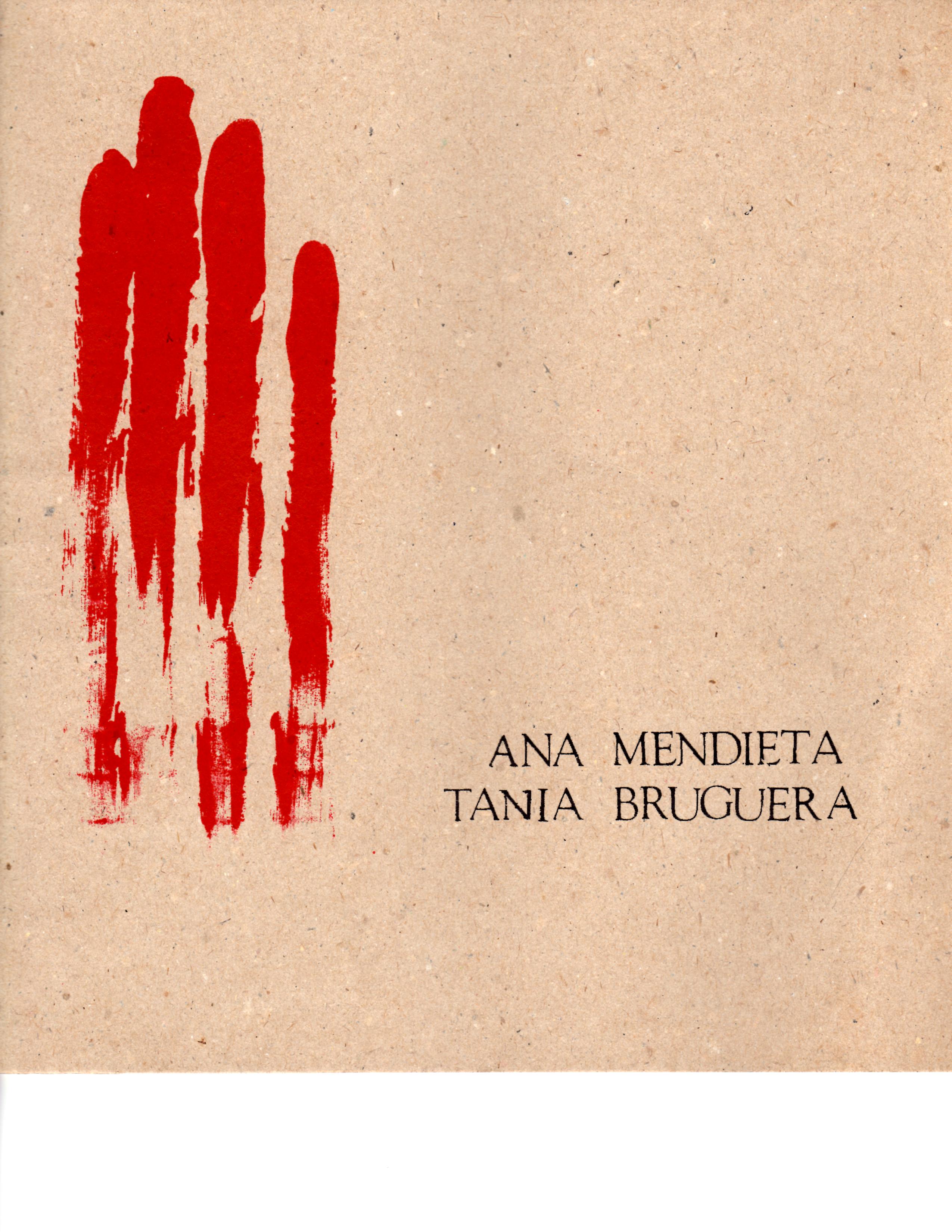Tania Bruguera
January 1992
From: Bruguera, Tania: “Tania Bruguera / Ana Mendieta,” Ed. CDAV. Havana, Cuba, 1992.
Tania Bruguera/Ana Mendieta
by Tania Bruguera
“If we must suffer, if we must sin, let suffering and sin hand out an acknowledgement merit.”
Cintio Vitier
“I wanted to put art again at the service of the mind.”
Marcel Duchamp
Art is for me “the space and form” through which I think. Each of my artistic conclusions is the consequence of existential positions, while art in turn models new attitudes in my own life. What I am showing today is an answer to the question of functionality in art, which is not “putting it up or down” for its consumption, but rather turning into a means of reflection and meaning.
Exhibiting Ana’s work, valid and important enough for art in Cuba, is giving it the place it deserves among us. Ana also looks at herself in life through her art; her actual legacy is ephemeral since it becomes part of nature. I share with her the idea of giving the creative process the same significance of the finished work, in an attitude towards it that is very close to devotion, responsibility, symbolical action, going beyond the object and seeing art as research and as “the form in which I reestablish the links uniting me with the universe.”1
Juan Fco. Elso is for me the paradigm of this view, since “the work” for him was a much larger, intense and complex process than the final product that could be exhibited. With “This Work Does Not Exist” – based on a fragment of his piece “The Night, the Day” – I suggest a visual archeology beyond the presented object. Reflecting on the meaning of this work offers the key to what I suggest: that exhibition as a “work” and “idea” transcend its mere existence as a museological, historical or documentary sample to become the expression of a point of view.
1 Mendieta, Ana. 1981. Took from Perreault, John, Tierra y Fuego (appear in the catalogue Ana Mendieta, a retrospective. The New Museum of Contemporary Art, 1987)

